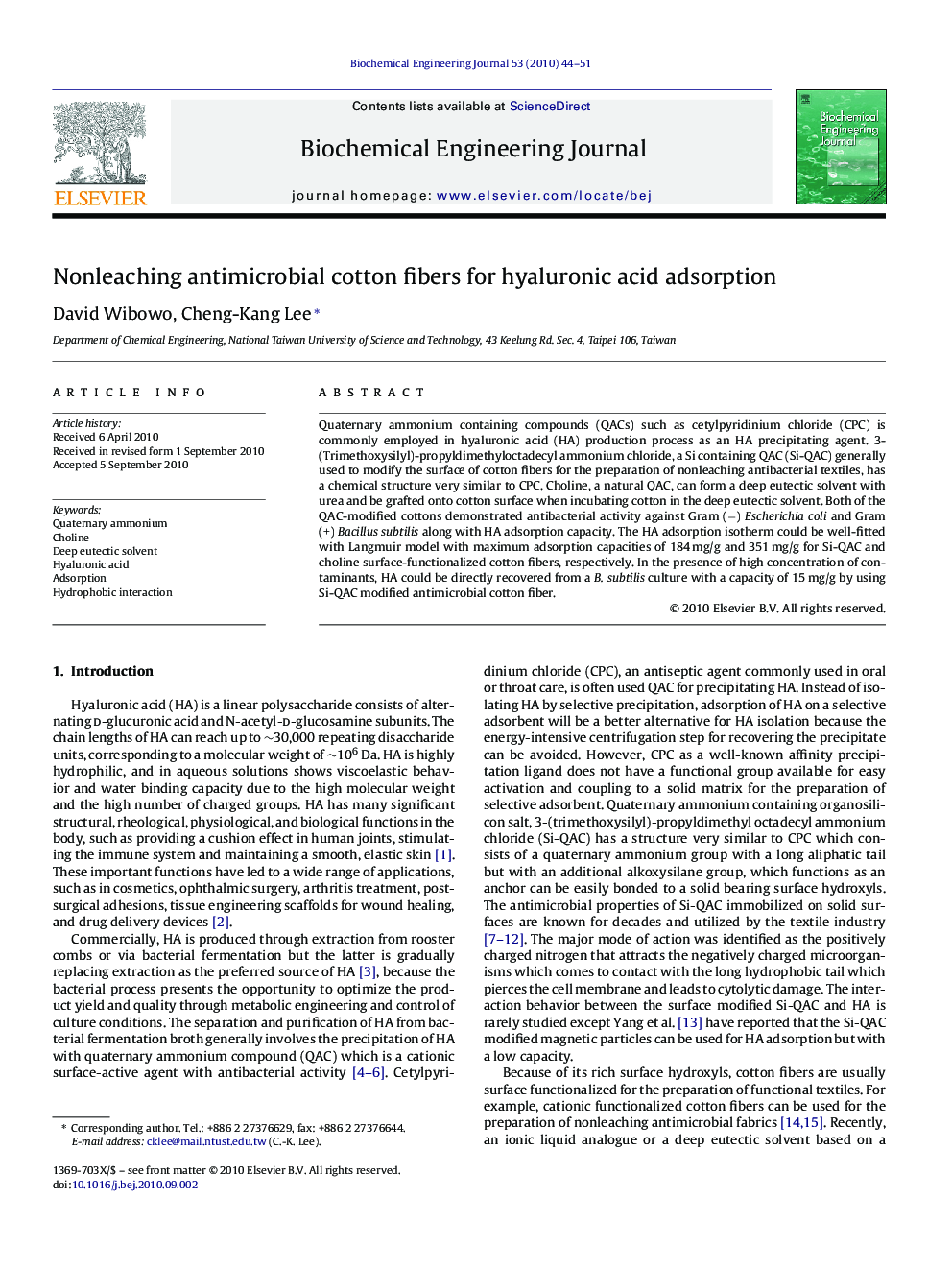| Article ID | Journal | Published Year | Pages | File Type |
|---|---|---|---|---|
| 3806 | Biochemical Engineering Journal | 2010 | 8 Pages |
Quaternary ammonium containing compounds (QACs) such as cetylpyridinium chloride (CPC) is commonly employed in hyaluronic acid (HA) production process as an HA precipitating agent. 3-(Trimethoxysilyl)-propyldimethyloctadecyl ammonium chloride, a Si containing QAC (Si-QAC) generally used to modify the surface of cotton fibers for the preparation of nonleaching antibacterial textiles, has a chemical structure very similar to CPC. Choline, a natural QAC, can form a deep eutectic solvent with urea and be grafted onto cotton surface when incubating cotton in the deep eutectic solvent. Both of the QAC-modified cottons demonstrated antibacterial activity against Gram (−) Escherichia coli and Gram (+) Bacillus subtilis along with HA adsorption capacity. The HA adsorption isotherm could be well-fitted with Langmuir model with maximum adsorption capacities of 184 mg/g and 351 mg/g for Si-QAC and choline surface-functionalized cotton fibers, respectively. In the presence of high concentration of contaminants, HA could be directly recovered from a B. subtilis culture with a capacity of 15 mg/g by using Si-QAC modified antimicrobial cotton fiber.
